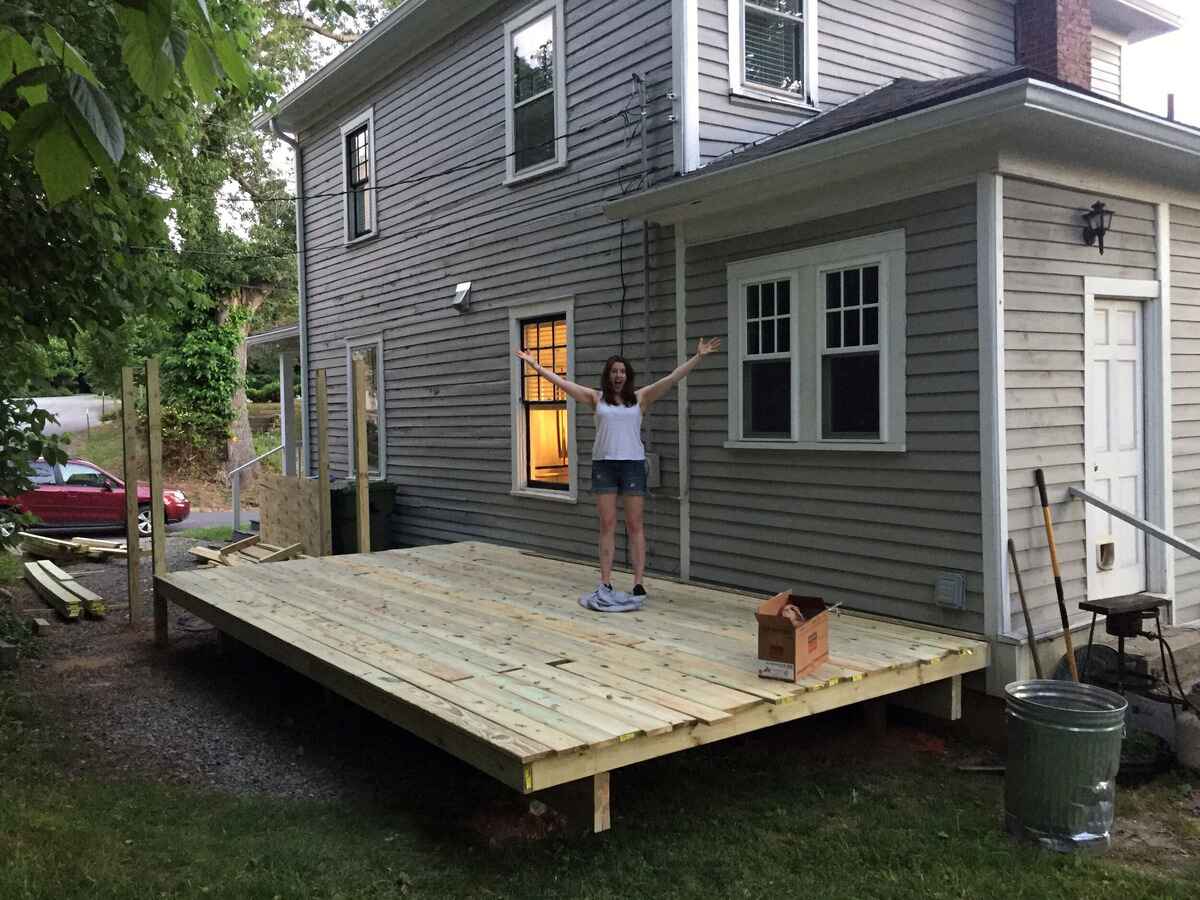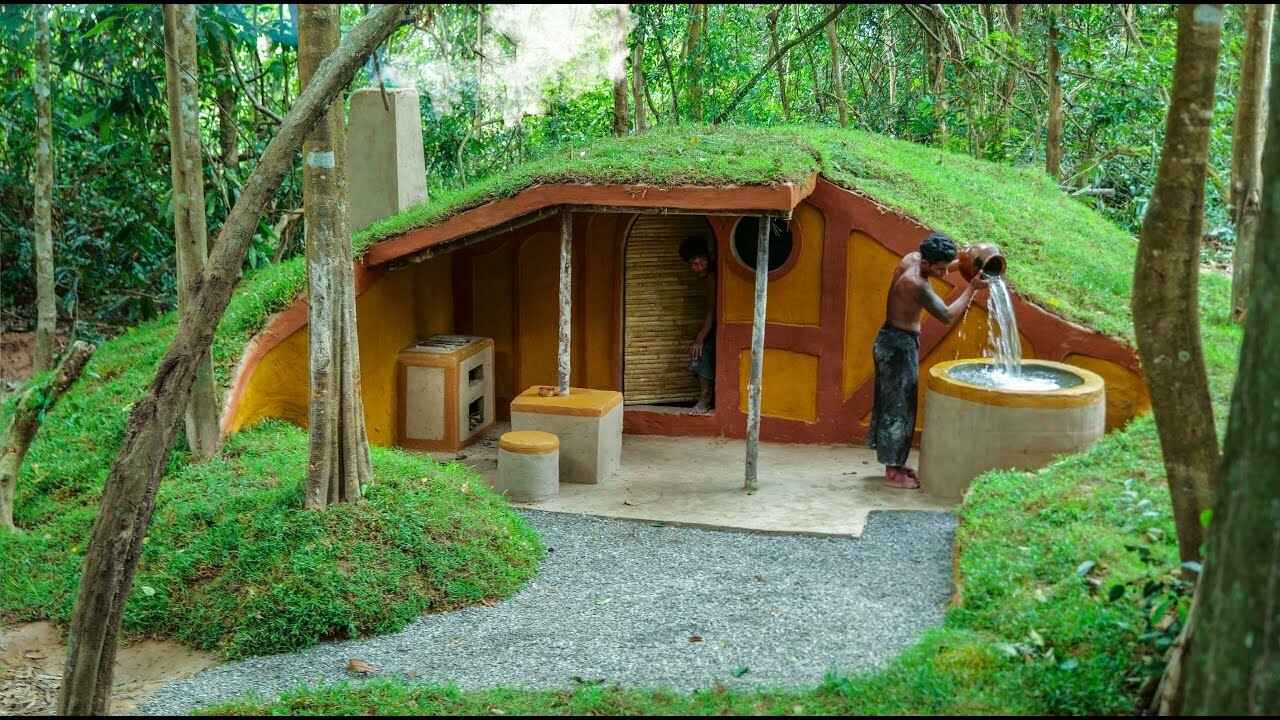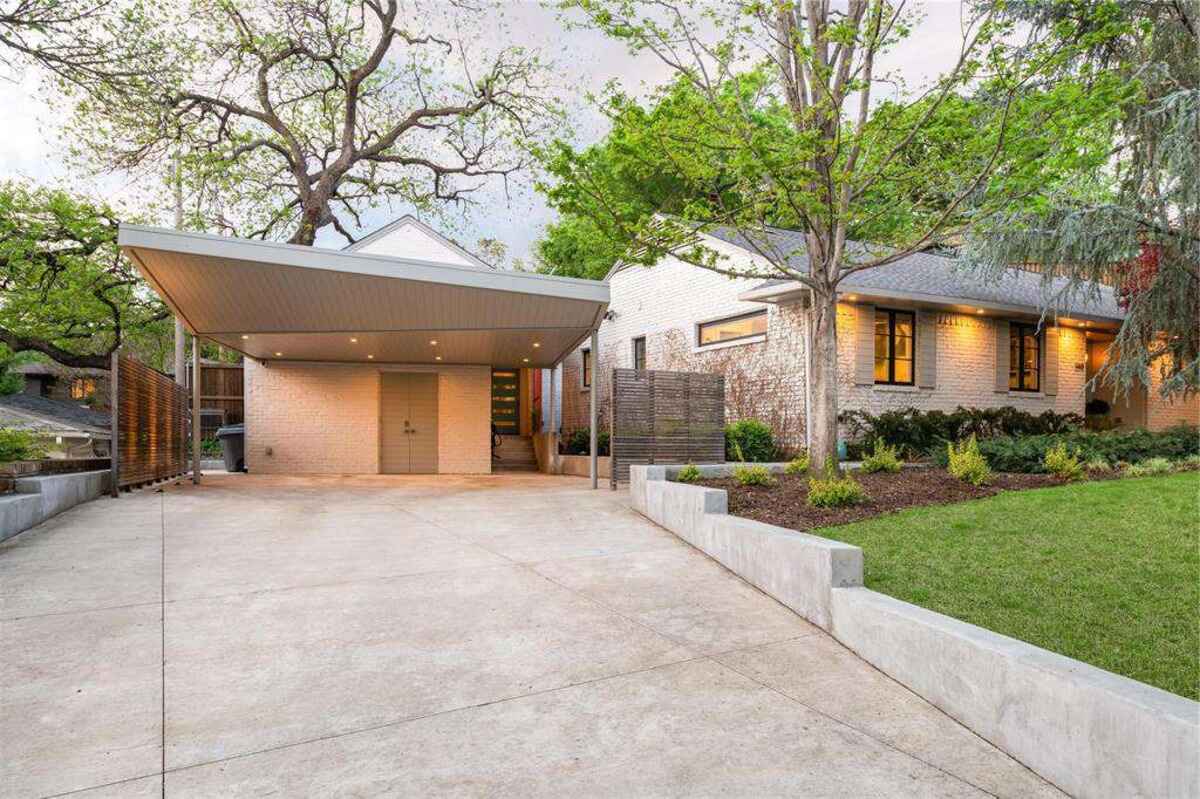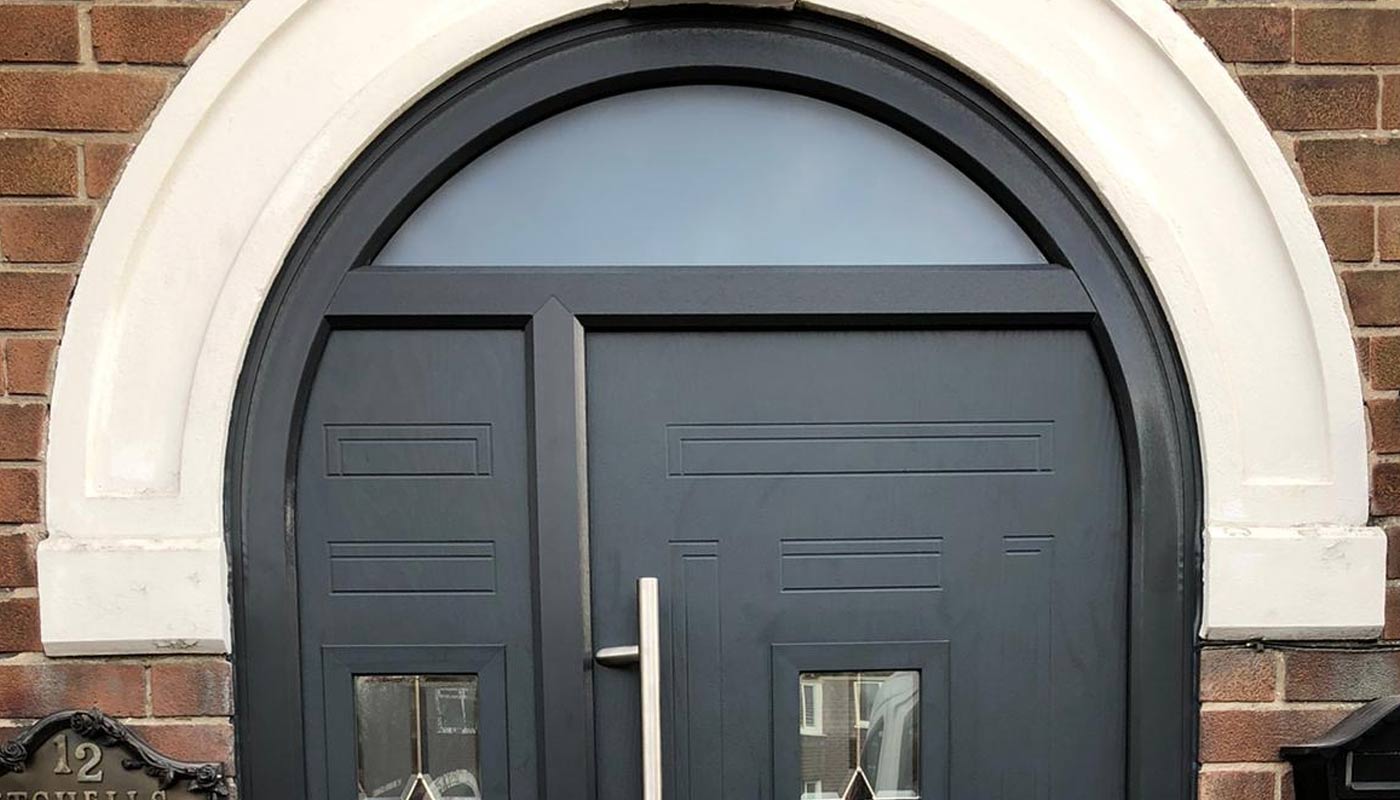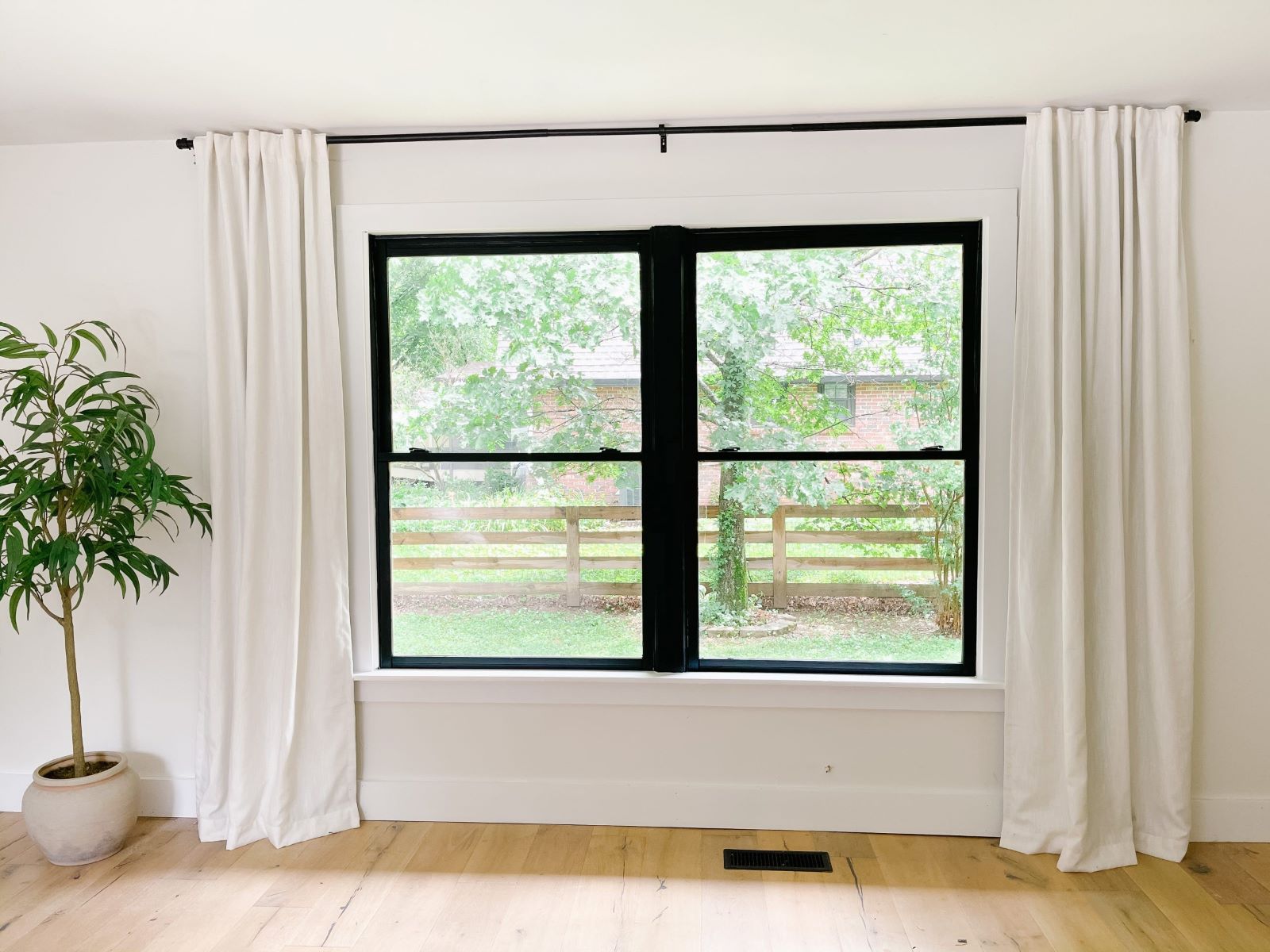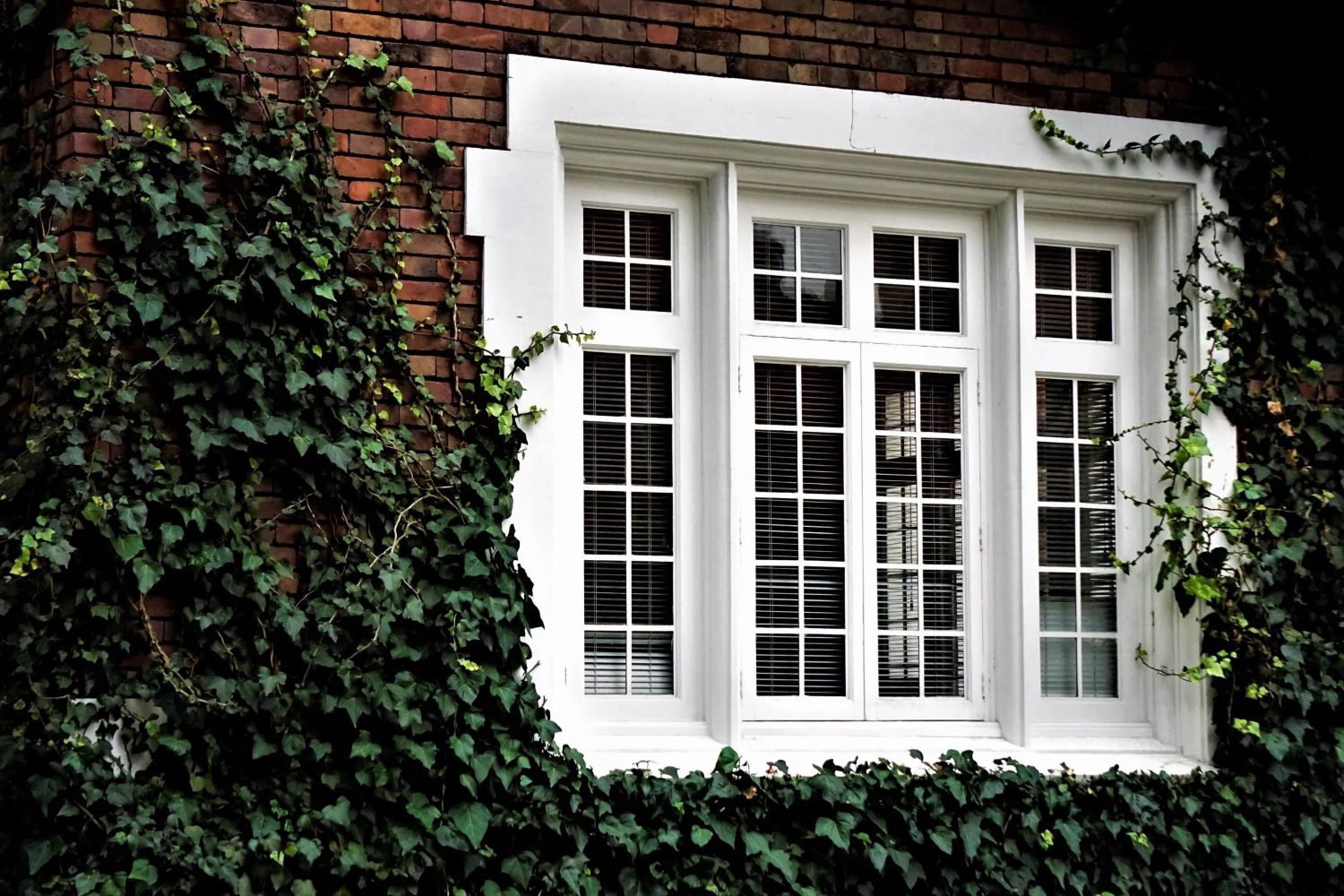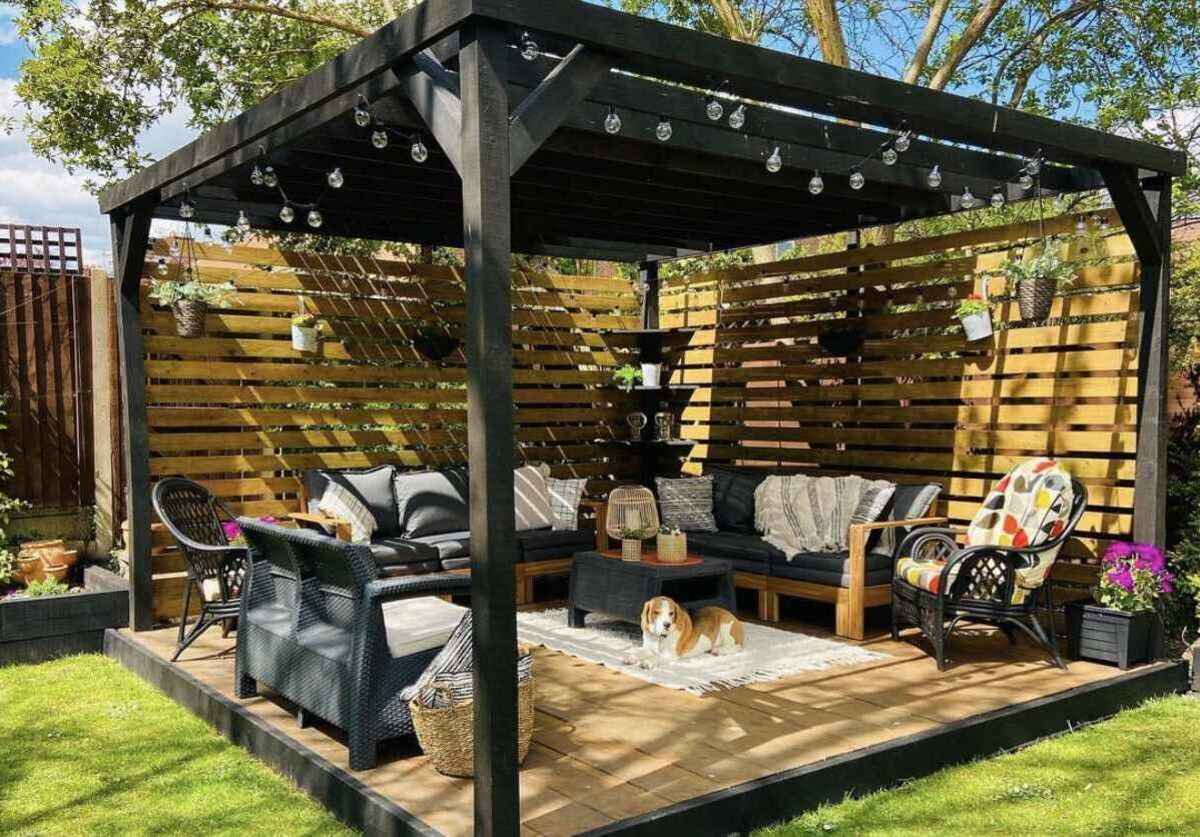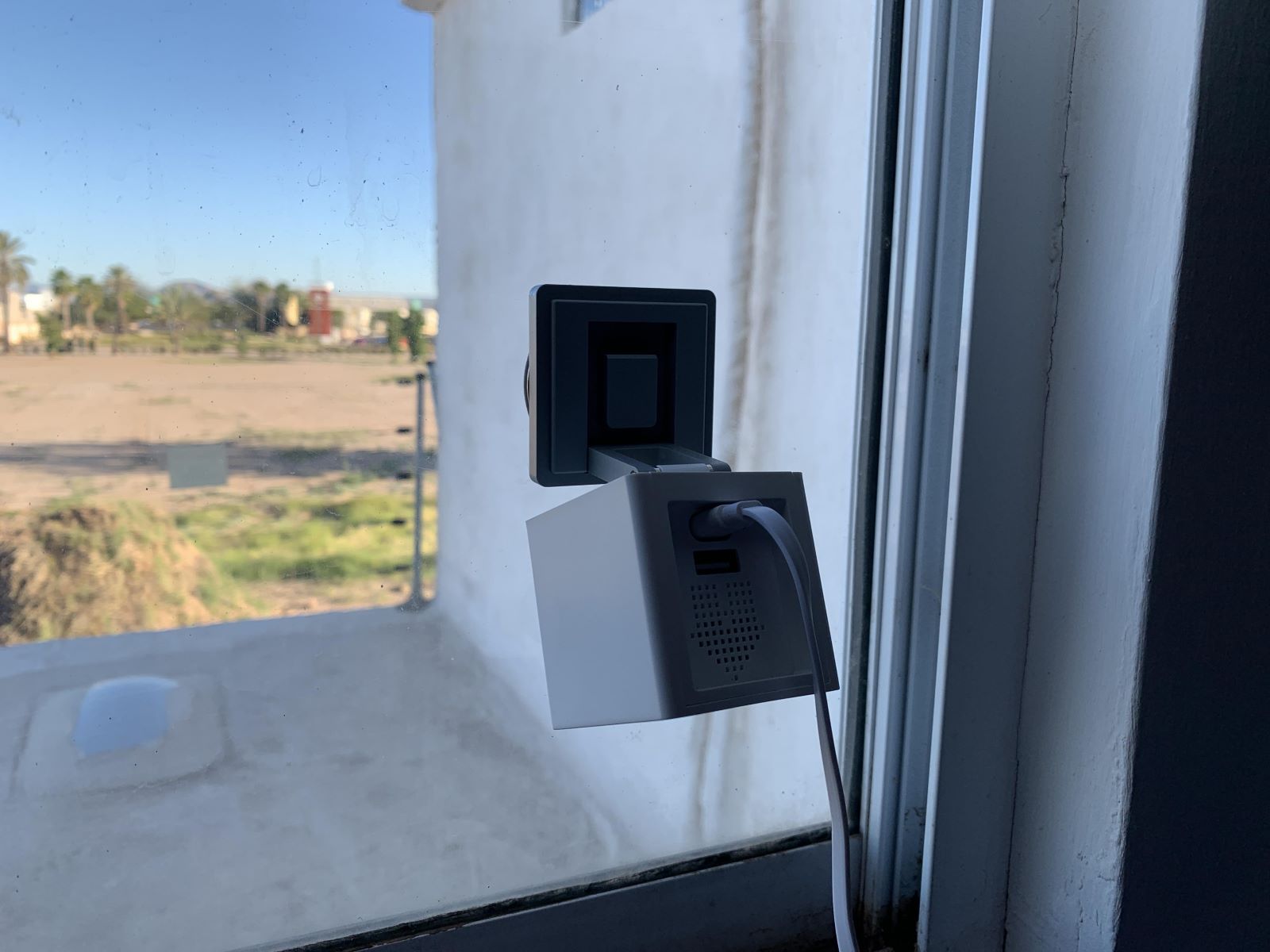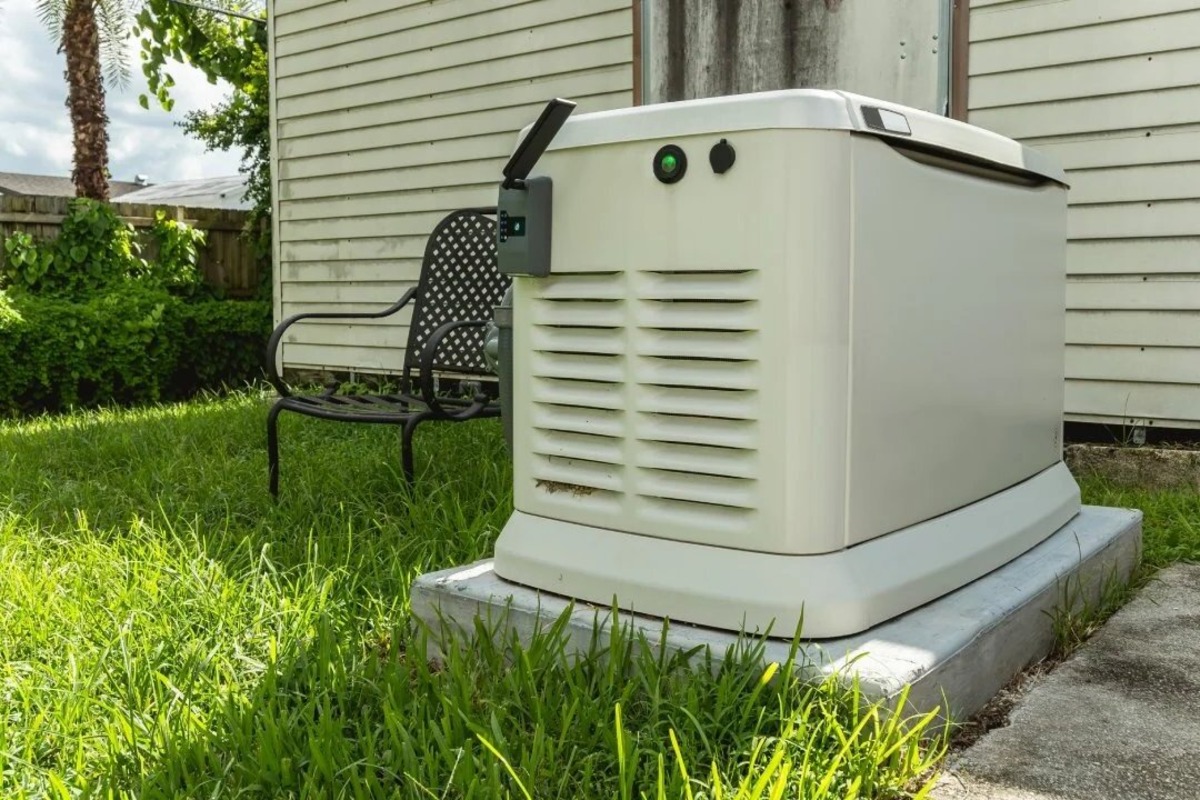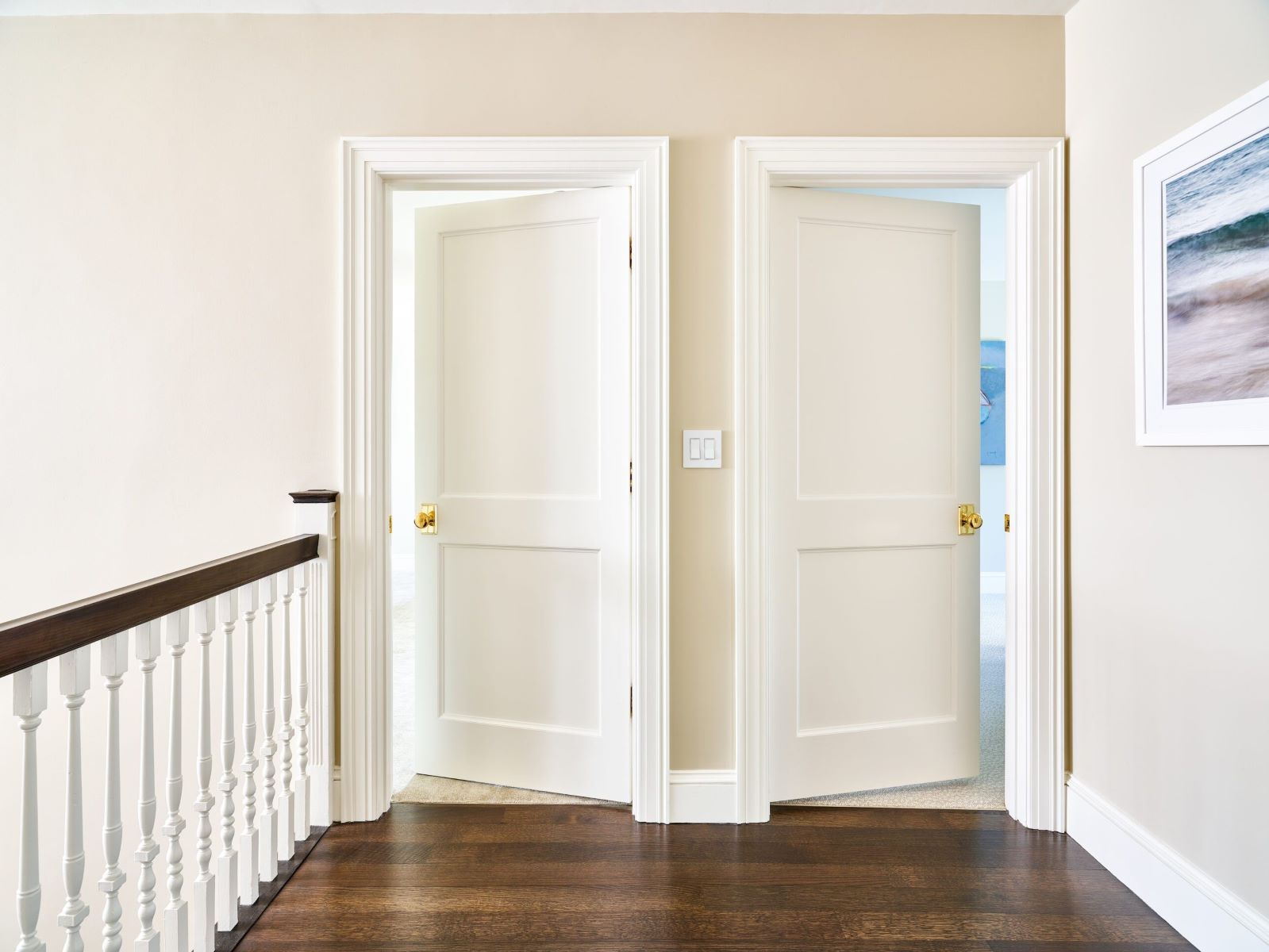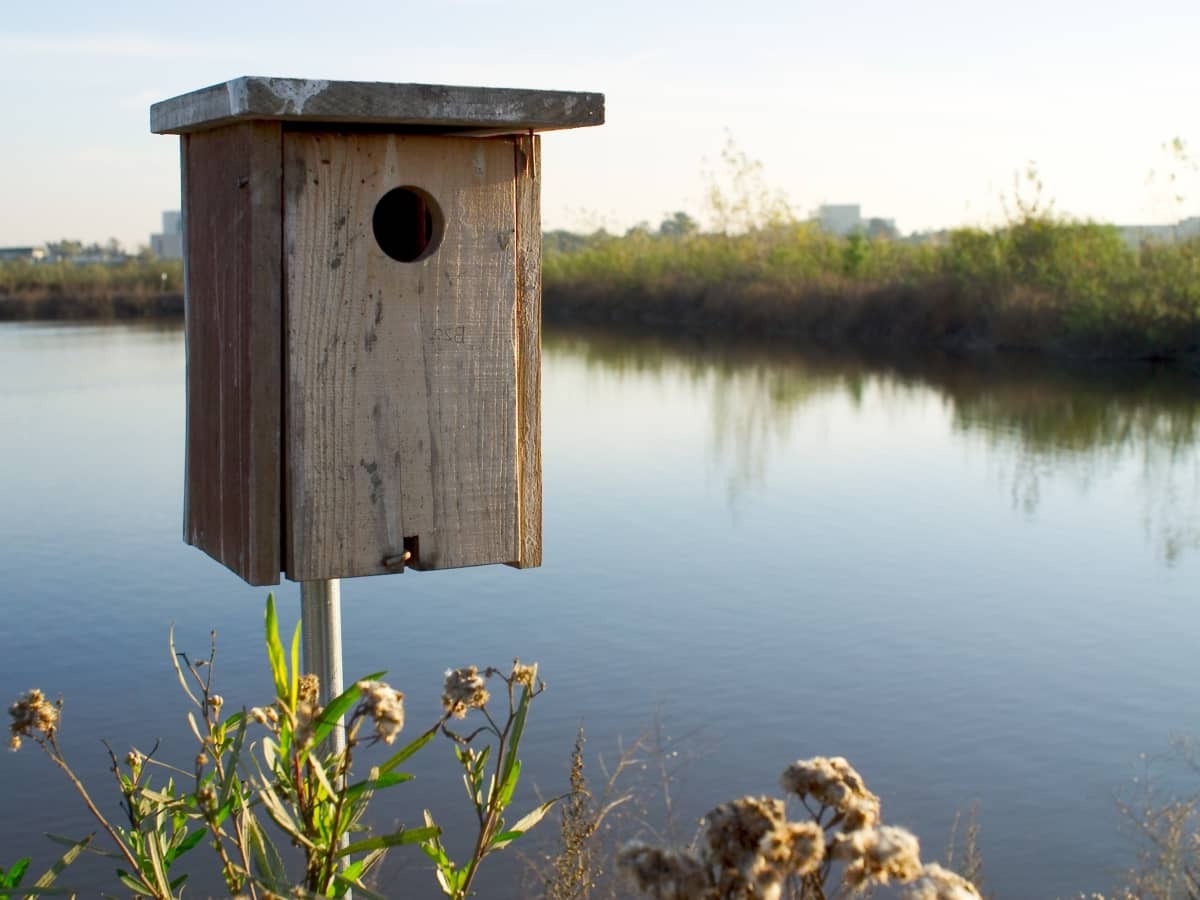Home>Create & Decorate>DIY & Crafts>How To Build A Dome House
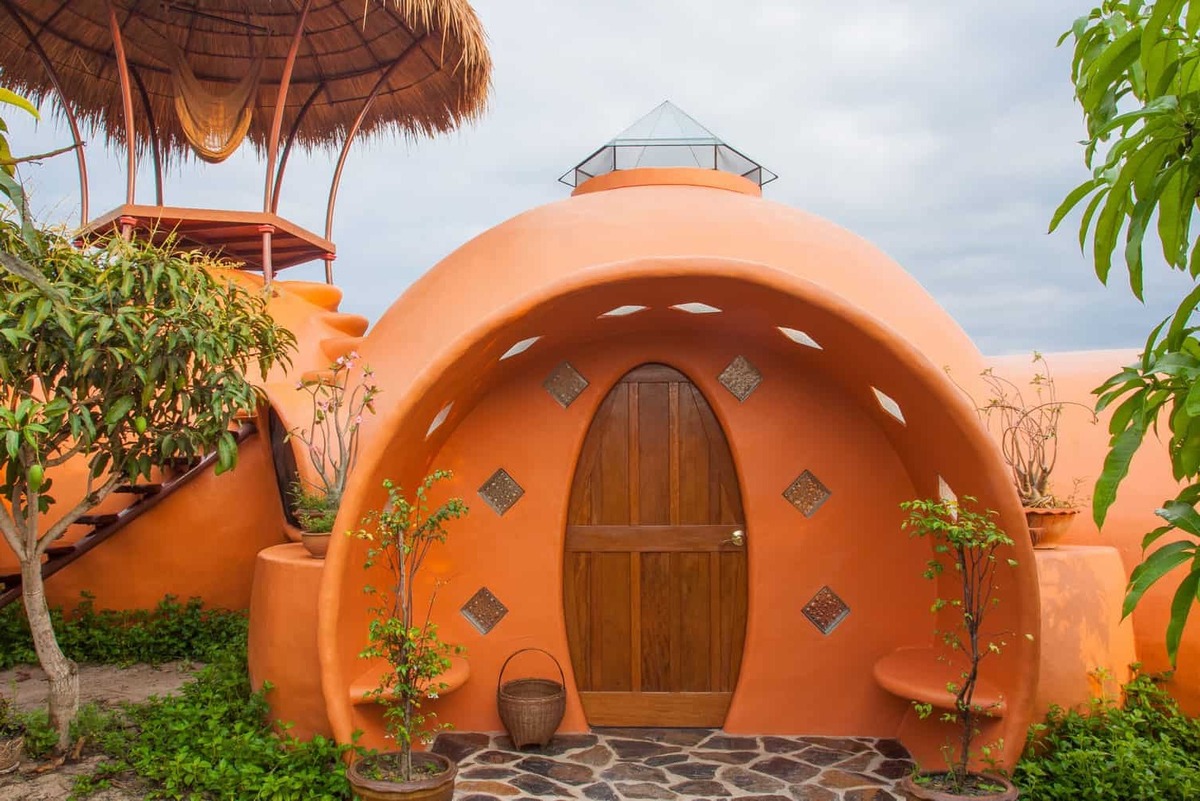

DIY & Crafts
How To Build A Dome House
Published: April 14, 2024

Senior Editor in Create & Decorate, Kathryn combines traditional craftsmanship with contemporary trends. Her background in textile design and commitment to sustainable crafts inspire both content and community.
Learn how to build a dome house with our DIY & Crafts guide. Get step-by-step instructions and tips for creating your own unique and sustainable home. Start your dome house project today!
(Many of the links in this article redirect to a specific reviewed product. Your purchase of these products through affiliate links helps to generate commission for Twigandthistle.com, at no extra cost. Learn more)
Introduction
So, you've decided to take on the challenge of building a dome house. Congratulations! Dome houses are not only unique and eye-catching, but they also offer a range of benefits, including energy efficiency, durability, and resistance to natural disasters. Whether you're looking to create a cozy retreat in the woods or a sustainable home for your family, building a dome house can be a rewarding and fulfilling project. In this guide, we'll walk you through the essential steps to help you bring your dome house dream to life. Let's get started!
Read more: How To Build A Frame House
Choosing the Right Location
When it comes to building a dome house, choosing the right location is crucial. Here are some key factors to consider:
-
Accessibility: Ensure that the location is easily accessible for construction materials and machinery. A remote location may pose logistical challenges and increase construction costs.
-
Terrain: Look for a flat or gently sloping terrain to simplify the construction process. Avoid areas prone to flooding or landslides.
-
Sun and Wind Exposure: Consider the orientation of the site to maximize natural light and energy efficiency. Additionally, assess wind patterns to position the dome for optimal ventilation.
-
Building Codes and Permits: Research local building codes and zoning regulations. Obtain the necessary permits before proceeding with the construction to avoid legal complications.
-
Utilities: Check the availability of essential utilities such as water, electricity, and sewage. If the chosen location lacks access to these utilities, consider the additional costs of installing off-grid systems.
By carefully evaluating these factors, you can select a suitable location that aligns with your vision for the dome house while minimizing potential challenges during the construction process.
Designing the Dome Structure
Designing the dome structure is a critical step in the construction process. Here are the key considerations to keep in mind:
-
Dome Size and Shape: Determine the size and shape of your dome house based on your space requirements and aesthetic preferences. Whether you opt for a small, cozy dome or a larger, more spacious design, ensure that the dimensions align with your needs.
-
Structural Support: Decide on the structural support system for the dome. This may involve utilizing a framework of steel or timber, or employing a reinforced concrete shell. Each option has its own benefits and considerations, so choose the one that best suits your budget and construction expertise.
-
Insulation and Ventilation: Plan for adequate insulation to regulate the interior temperature and minimize energy consumption. Additionally, incorporate ventilation systems to ensure proper air circulation within the dome.
-
Natural Light: Integrate windows or skylights into the design to maximize natural light. This not only enhances the visual appeal of the dome house but also reduces the reliance on artificial lighting during the day.
-
Interior Layout: Consider the interior layout and how the dome's unique shape will influence room divisions and functionality. Embrace the unconventional layout to create distinctive living spaces within the dome.
-
Environmental Considerations: Explore eco-friendly design elements such as green roofs, rainwater harvesting systems, and solar panel integration to enhance the sustainability of the dome house.
By carefully planning and designing the dome structure, you can create a functional and visually striking living space that aligns with your lifestyle and values.
Gathering Materials and Tools
Gathering the necessary materials and tools is a crucial aspect of preparing for the construction of a dome house. Here's a comprehensive list to help you get started:
Materials
- Dome Components: Depending on your chosen design, acquire the necessary components such as prefabricated dome panels, geodesic connectors, or structural framework materials.
- Insulation: Select high-quality insulation materials to ensure energy efficiency and climate control within the dome.
- Construction Materials: Stock up on construction essentials including concrete, rebar, lumber, and sheathing for the foundation and structural elements.
- Roofing Materials: Choose durable roofing materials suitable for the dome's unique shape, such as shingles, metal panels, or membrane roofing.
- Windows and Doors: Source energy-efficient windows and doors that complement the dome's design while providing security and insulation.
- Utilities: Purchase plumbing, electrical, and HVAC materials required for the installation of essential utilities within the dome house.
Read more: How To Build An Owl House
Tools
- Construction Tools: Gather a comprehensive set of tools including hammers, saws, drills, levels, and measuring equipment for general construction tasks.
- Specialized Dome Tools: Depending on the dome construction method, acquire specialized tools for assembling dome components, such as dome connectors, lifting equipment, and scaffolding.
- Safety Equipment: Prioritize safety by obtaining personal protective gear, fall protection equipment, and first-aid supplies for the construction crew.
- Utility Installation Tools: Include tools specific to utility installation, such as plumbing wrenches, electrical wiring tools, and HVAC equipment for system setup.
By ensuring that you have all the necessary materials and tools on hand, you can streamline the construction process and minimize delays, allowing for a more efficient and organized building experience.
Preparing the Foundation
The foundation serves as the anchor for the entire dome house, providing stability and support for the structure. Here's a detailed overview of the essential steps involved in preparing the foundation for your dome house:
-
Site Preparation: Clear the chosen site of any vegetation, rocks, or debris to create a clean and level surface for the foundation. Use grading and excavation equipment to ensure the site is properly leveled and compacted.
-
Foundation Design: Determine the most suitable foundation type for your dome house, considering factors such as soil composition, local building codes, and the structural requirements of the dome. Common foundation options include slab-on-grade, pier and beam, or frost-protected shallow foundations.
-
Excavation and Footings: Excavate the designated areas for the footings, ensuring that the depth and dimensions align with the structural engineering plans. Install rebar reinforcement within the footings to enhance their load-bearing capacity and durability.
-
Formwork Construction: Construct formwork to outline the shape and dimensions of the foundation. This may involve using wooden or metal forms to contain the concrete during the pouring process, ensuring that it cures into the desired foundation shape.
-
Concrete Pouring: Pour the concrete mixture into the prepared formwork, taking care to achieve a uniform and level surface. Utilize concrete vibrators to eliminate air pockets and ensure proper consolidation of the concrete within the formwork.
-
Curing and Finishing: Allow the poured concrete to cure according to the recommended timeline, providing adequate moisture and temperature control to promote optimal strength development. Once cured, remove the formwork and inspect the foundation for any imperfections, addressing them as needed.
-
Waterproofing and Insulation: Apply waterproofing membranes or coatings to the foundation to protect against moisture infiltration. Additionally, consider incorporating insulation materials to enhance energy efficiency and prevent heat loss through the foundation.
By meticulously preparing the foundation, you establish a solid base for the dome house, laying the groundwork for a structurally sound and resilient living space.
Constructing the Dome
Constructing the dome is a pivotal phase in bringing your dome house to life. Here's a comprehensive guide to the essential steps involved in the construction process:
-
Panel Assembly: If utilizing prefabricated dome panels, carefully assemble the panels according to the manufacturer's instructions. Ensure that the panels are securely connected and aligned to form the desired dome shape.
-
Lifting and Placement: Employ appropriate lifting equipment or techniques to hoist the assembled dome panels into position. Work systematically to place and secure each panel, maintaining the structural integrity of the dome.
-
Connector Installation: If utilizing a geodesic dome design, install the specialized connectors to join the dome elements. Follow the specific assembly guidelines to ensure the accurate placement and connection of the connectors.
-
Structural Reinforcement: Depending on the dome construction method, reinforce the structural elements as necessary. This may involve welding steel framework components, securing timber supports, or applying additional reinforcement to the dome shell.
-
Roofing Installation: Once the dome structure is in place, proceed with the installation of the roofing materials. Ensure that the roofing system is weatherproof and capable of withstanding the environmental conditions specific to your location.
-
Window and Door Integration: Cut openings for windows and doors as per the design specifications. Install energy-efficient windows and doors, ensuring proper sealing and insulation to enhance the comfort and energy performance of the dome house.
-
Exterior Finishing: Apply exterior finishes such as stucco, siding, or protective coatings to the dome structure. Consider weather-resistant and durable materials to safeguard the exterior of the dome house.
-
Interior Framing: Frame the interior walls and partitions to define the living spaces within the dome. Embrace the unique geometry of the dome to create distinctive interior layouts and design features.
-
Utilities Integration: Coordinate the installation of plumbing, electrical, and HVAC systems within the dome. Ensure compliance with safety standards and building codes while integrating these essential utilities into the structure.
-
Interior Finishes: Complete the interior finishes, including insulation, drywall installation, flooring, and interior detailing. Pay attention to the aesthetic and functional aspects of the interior design to create a comfortable and inviting living environment.
By following these steps, you can successfully construct the dome, transforming it from a conceptual design into a tangible and functional living space. Each phase of the construction process contributes to the realization of your vision for a unique and resilient dome house.
Installing Utilities
Installing utilities within the dome house is a crucial aspect of the construction process, ensuring that essential systems for water, electricity, and climate control are seamlessly integrated into the structure. Here's a detailed overview of the key steps involved in installing utilities:
-
Plumbing Installation: Begin by planning the layout for the plumbing system, considering the location of bathrooms, kitchens, and utility areas within the dome house. Install water supply lines, drainage pipes, and fixtures in accordance with the approved building plans. Prioritize the use of water-efficient fixtures and consider incorporating greywater recycling systems to minimize water wastage.
-
Electrical Wiring: Design a comprehensive electrical plan to accommodate the power needs of the dome house. Install wiring for lighting, outlets, appliances, and any specialized electrical requirements. Adhere to electrical codes and safety standards, ensuring proper grounding and circuit protection. Consider the integration of energy-efficient lighting and smart home technologies to enhance the functionality and energy performance of the dome house.
-
HVAC System Integration: Determine the most suitable heating, ventilation, and air conditioning (HVAC) system for the dome house, taking into account the climate conditions of the location. Install ductwork, vents, and HVAC units to provide efficient temperature control and air circulation within the dome. Explore alternative heating and cooling solutions such as geothermal systems or passive solar design to minimize energy consumption.
-
Utility Connection: Coordinate the connection of the dome house to external utility sources, such as municipal water supply, electrical grid, or propane gas service. Ensure compliance with local regulations and utility provider guidelines when establishing these connections. If opting for off-grid living, plan for the installation of renewable energy systems, water wells, and septic systems to support self-sufficient utility operations.
-
Safety Considerations: Prioritize safety measures during the installation of utilities, including the proper sealing of gas lines, installation of carbon monoxide detectors, and adherence to fire safety protocols. Conduct thorough inspections of the installed utility systems to verify their functionality and compliance with safety standards.
By meticulously integrating plumbing, electrical, and HVAC systems into the dome house, you can create a comfortable and functional living environment that meets the daily utility needs of its occupants. The seamless installation of utilities contributes to the overall sustainability and livability of the dome house, enhancing its long-term performance and comfort.
Read more: How To Build Tiny House On Trailer
Finishing Touches and Interior Design
After completing the structural and utility aspects of the dome house, attention turns to the finishing touches and interior design, where the unique character of the dome can truly shine. Here's a detailed look at the essential considerations for this phase:
-
Interior Layout and Furnishing: Embrace the unconventional layout of the dome to create distinct living spaces. Consider open floor plans, curved walls, and loft areas to maximize the use of space. Select furniture and fixtures that complement the curvature of the dome, creating a harmonious blend of form and function.
-
Natural and Artificial Lighting: Leverage the dome's design to optimize natural light penetration. Strategically position windows, skylights, and light wells to illuminate the interior while minimizing the need for artificial lighting during the day. Incorporate energy-efficient lighting fixtures to enhance the ambiance and functionality of the living spaces.
-
Interior Finishes: Choose interior finishes that enhance the aesthetic appeal and comfort of the dome house. Explore options such as natural wood paneling, eco-friendly paints, and textured wall treatments to add warmth and visual interest to the interior surfaces. Consider the use of sustainable and non-toxic materials to promote a healthy indoor environment.
-
Flooring Selection: Select flooring materials that align with the overall design concept and practical requirements of the dome house. Options such as polished concrete, bamboo flooring, or cork tiles can complement the unique architecture of the dome while offering durability and ease of maintenance.
-
Color Palette and Décor: Curate a color palette that accentuates the organic and inviting nature of the dome house. Earthy tones, soft neutrals, and nature-inspired hues can create a calming and cohesive atmosphere. Integrate natural elements such as indoor plants, artisanal crafts, and personalized artwork to infuse character into the interior spaces.
-
Custom Features and Built-Ins: Embrace the opportunity to incorporate custom features and built-in elements tailored to the dome's shape. Consider curved shelving, built-in seating, or niche spaces that capitalize on the dome's unique geometry, adding both functionality and visual intrigue to the interior design.
-
Sustainable Design Elements: Integrate sustainable design elements such as energy-efficient appliances, passive heating and cooling strategies, and water-saving fixtures to align with the eco-friendly ethos of the dome house. Explore the use of recycled materials and upcycled furnishings to minimize environmental impact and promote sustainability.
By focusing on these aspects of finishing touches and interior design, you can transform the dome house into a captivating and livable space that reflects your personal style and values. The seamless integration of design elements and thoughtful detailing contributes to the overall appeal and functionality of the dome house, creating a truly exceptional living environment.
Conclusion
In conclusion, building a dome house is a challenging yet rewarding endeavor that offers a unique living experience. From selecting the right location and designing the structure to the construction and interior design, every step contributes to the creation of a distinctive and sustainable home. The resilience, energy efficiency, and aesthetic appeal of dome houses make them an attractive option for those seeking a non-traditional living space.
By carefully considering the site, materials, and utilities, individuals can embark on the journey of constructing their own dome house, tailored to their preferences and values. The process involves a blend of creativity, technical expertise, and a commitment to sustainable living. As the final touches are added and the interior comes to life, the dome house becomes a testament to innovation and environmental consciousness.
Ultimately, the completion of a dome house represents not just a construction achievement, but a realization of a vision for a harmonious and unconventional dwelling. Whether used as a primary residence, a vacation retreat, or a sustainable living experiment, the dome house stands as a testament to the possibilities of alternative architecture and the pursuit of a unique lifestyle.

